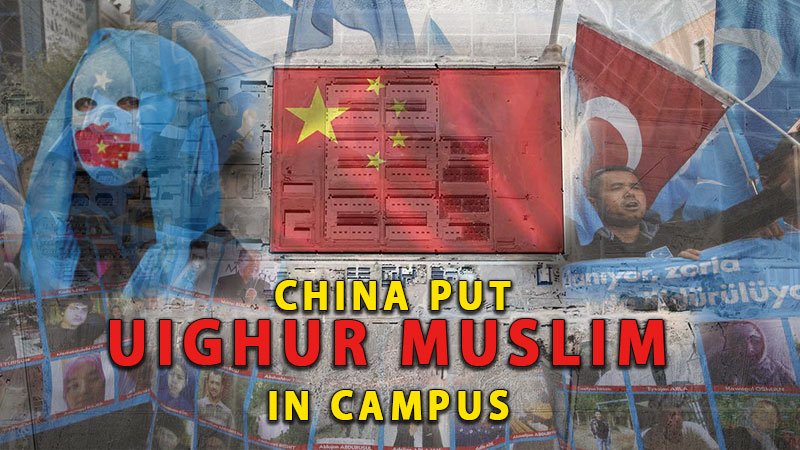IN A recent report based on leaked documents of the Chinese government, The New York Times described the nature of the crackdown on Uighur Muslims and other ethnic minorities, 1 million of whom have been detained in a growing network of internment camps in Xinjiang region.
Who are the Uighur Muslims and why are they facing a crackdown?
Uighur Muslims belong to an ethnicity and a culture that is different from that of mainland China. They claim closer ethnic ties to Turkey and other central Asian countries than to China.
View our Blog: https://ensembleias.com/blog/
They belong to the Xinjiang Uighur Autonomous Region, China’s largest region, which borders eight countries, including India, Pakistan and Russia. As Xinjiang has grown in prosperity over the last few decades, it has attracted large numbers of majority Han Chinese, and left Uighurs worried about their livelihood and identity. This has led to violence, and the crackdown.
A riot in 2009 killed 200 people, mostly Han Chinese, in the region’s capital Urumqi. In 2014, during a visit by President Xi Jinping, a suicide bombing at a railway station in Urumqi killed one person and injured nearly 80. Weeks previously, Uighur militants had stabbed several people at a railway station, killing 31. In May that year, 39 people were killed in a blast in a vegetable market.
According to China officials quoted by NBC News, since 1990, “several thousand” people have been killed or injured in “explosions, assassinations, poisoning, arson and riots” carried out by Uighurs.

China-put-Uighur-Muslims-in-campus
Who are sent to these camps, and why?
People have been sent to these camps for showing any signs of extremism, with the government deciding what was “extremism” – Sporting beards, fasting during Ramzan, dressing differently from the majority sending Eid greetings, praying too often, giving up smoking and drinking, or not knowing Mandarin.
NBC News quoted Chinese officials at one of these camps as telling them that the inmates were broadly of three categories – “those who have committed a minor offence like wearing a burqa or watching an illegal religious video; those who have committed more serious offences and were given the choice to attend instead of going to jail, and others who are sent for rehabilitation after a prison term”.
China claims its efforts are towards re-assimilation of the Uighur. In the recent report, The New York Times described government guidelines for officials on how to address concerns of students returning home from the mainland, who are to be told that their missing relatives have been “infected by the “virus” of Islamic radicalism and must be quarantined and cured at detention centres.
The centres are shrouded in mystery, however, with China not allowing unrestricted access to foreign observers, and its official line differing greatly with what media reports, former detainees and their families have to say.
Visit our store at http://online.ensemble.net.in
How many such camps exist?
Various reports are based on satellite imagery, construction data, and audio-visual data collected from activists. Satellite imagery shows buildings on what was vacant land until a few years ago, and addition of floors to existing buildings, with features such as high walls, barbed wires, double fencing, watchtowers, surveillance cameras.
The Australian Strategic Policy Institute analysed such data in a November 2018 report, and put the number of camps between 180-1,200, with a 465% growth in area since 2016.
According to a report in The Guardian, in 2018 “a total of about 7% of the county’s adult population, or 11% of the entire male population” was in these camps.
What happens in these camps?
Knowledge of this is based on media interviews with former inmates and their relatives. A former inmate told the BBC: “They wouldn’t let me sleep, they would hang me up for hours, and they would beat me. They had thick wooden and rubber batons, whips made from twisted wire, needles to pierce the skin, pliers for pulling out the nails. All these tools were displayed on the table in front of me, ready to use at any time. And I could hear other people screaming as well.”
In January this year, in the face of growing criticism, the Chinese government invited a few journalists and diplomats to visit the camps. According to a Reuters report, the inmates told journalists they had seen the error of their ways and discovered the evils of radicalisation, were glad the government was reforming them, and also danced to “If You Are Happy And You Know It Clap Your Hands”.
The government maintains it is providing the inmates vocational skills, but many of those detained are professors, doctors, skilled professionals, so it is not dear what are these “skills” are supposed to achieve.
Officials did not provide to journalists the exact criteria to determine when a person could be released.
What does China say of the allegations?
Chinese media dismisses these. In March this year, the newspaper Global Times wrote: “Misleading headlines, groundless accusations, obscure interviewees, double standards are not hard to spot in many articles covering China’s Xinjiang Uighur Autonomous Region in Western media outlets. Recent months have seen an intensive outburst of such reports which have tainted China’s anti-terrorism efforts in the region by adopting tactics including using words with a negative connotation, providing incomplete information and stirring readers’ emotions.”
Source : The Indian Express | Written by: Yashee
#geography_optional #upsc2020 #ias #k_siddharthasir #Government_of_India #india #studyabroad #geography #upsc #bhugol #government #news #dailynews #gk #dailyquiz #editorial




